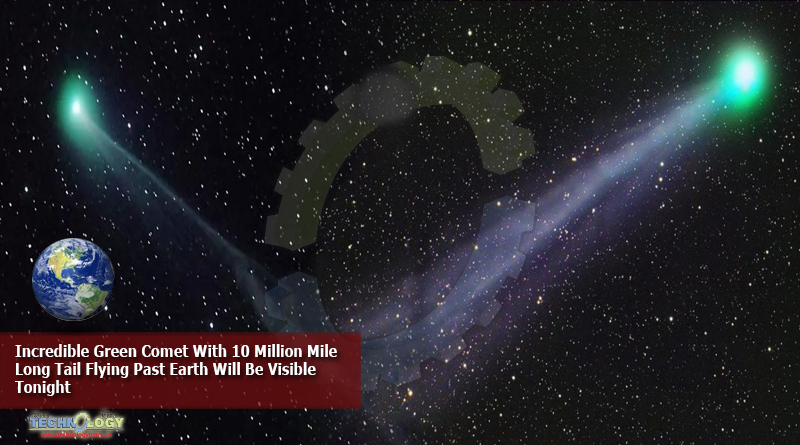The Green comet will fly past Earth before getting closer to the sun and then heading off back through the solar system. And while you won’t need a telescope to be able to see it, using binoculars may be your best chance at catching a glimpse.

The comet gets its green tinge from water vapour its ‘icy core releases into space when heated by the sun,’ which forms a ‘cloud of hydrogen that surrounds the comet, giving off a bright spot of Lyman-alpha light.’
According to the European Space Agency (ESA), while the Comet Swan is currently ‘faintly visible’ to the naked eye, it’s brightest point may be at the end of the month.
The comet’s vigour could be significant for observers on Earth. The more material ejected from the comet, the more sunlight it reflects and the more visible it becomes. Currently moving from the southern to the northern skies, it is just faintly visible to the naked eye, but current estimates suggest that, by the end of May, it could be significantly brighter – if it survives that long.
Amateur astronomer David Blanchflower gave tips on how to view Comet Swan, but advised it may not be as easy as looking up to the night sky.
From the UK it will be low on the eastern horizon before sunrise. Won’t be easy to spot. Binoculars rather than naked eye would give someone the best chance of seeing it.
Into next month it will have a better elevation but not predicted to be very bright so again binoculars or a small telescope would be needed.
According to the ESA, this ‘is almost certainly the only time the comet will be visible in our lifetimes,’ as it’s believed the ‘comet’s orbital period is measured in thousands or even millions of years.’
Originally Publish at: https://www.unilad.co.uk/
